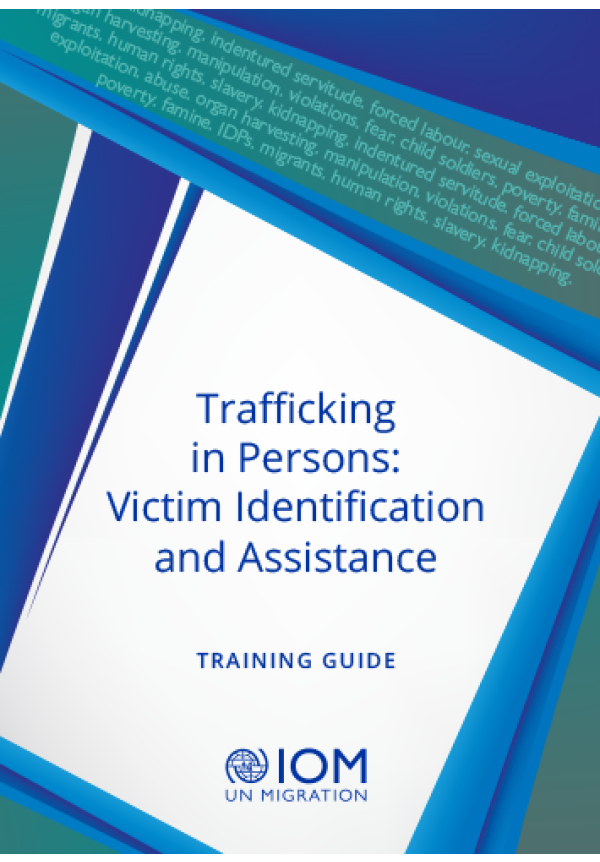
Original Language
English
Number of Pages
80
Reference Number
PUB2019/054/EL
Year of Publication
2020
Trafficking in Persons: Victim Identification and Assistance (Training Guide)
The International Organization for Migration (IOM) in Nigeria produced two manuals on strengthening law enforcement response to gender-based violence and trafficking in persons in the current humanitarian situation in North-East Nigeria. The manuals were designed based on the recommendations from the training needs assessment conducted by IOM in North-East Nigeria. The two manuals integrate training materials and resources developed by other agencies and experts, provide recommendations from the assessment report and operationalize key guidelines, including those from the Inter-Agency Standing Committee.
Read More
- List of figures
- List of acronyms
- Section 1: Introduction to the training manual
- 1.1. Purpose and objectives
- 1.2. Overall objective of the manual
- 1.3. Targeted audience
- 1.4. How to use this manual
- 1.5. Methodology
- Section 2: Understanding trafficking in persons
- 2.1. Defining trafficking in persons
- 2.2. Acts, means and purpose: Key elements of the trafficking in persons definition
- 2.3. Trafficking cases involving children
- 2.4. Consent
- 2.5. Victim and traffickers’ profile
- 2.6. Types and forms of exploitation in trafficking cases
- 2.7. Methods used to control victims of trafficking
- 2.8. Consequences of trafficking in persons
- 2.9. Trafficked children
- 2.10. Behavioural impact
- Section 3: Victim identification and screening
- 3.1. Victim identification
- 3.2. Mechanisms for detecting trafficking – Investigation options
- 3.3. Victim identification process
- 3.4. Common signs or indicators by forms of exploitation
- 3.5. Routine law enforcement patrol and planned raids
- 3.6. Human trafficking crime scene
- 3.7. Screening for a victim of trafficking
- 3.8. Screening tool
- Section 4: Interviewing victims of trafficking
- 4.1. Guiding principles for interviewing victims of trafficking
- 4.2. Pre-interview considerations for law enforcement personnel
- 4.3. Practical recommendations in building relations and trust
- 4.4. Interview – Special considerations
- 4.5. The “PEACE model” for interviewing victims of trafficking
- Section 5: Victim protection and assistance
- 5.1. Legal framework for victim protection and assistance: Victims’ rights
- 5.2. Role and responsibilities of law enforcement agencies in providing victim protection and assistance
- 5.3. Risk assessment and safety planning
- 5.4. Direct assistance
- Annexes
- Annex 1: NAPTIP Screening Tool
- Annex 2: Victim of trafficking screening form
- Annex 3: Victim consent form